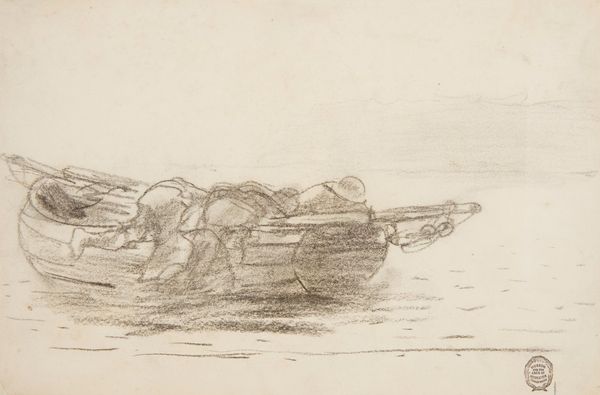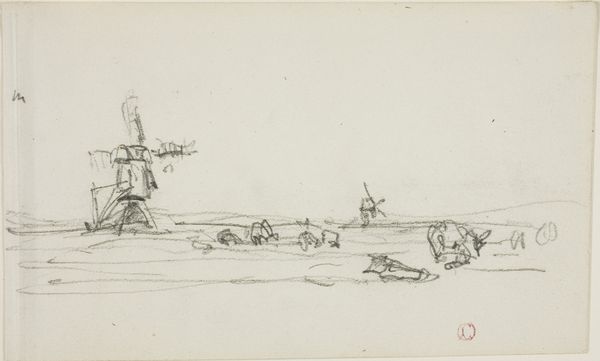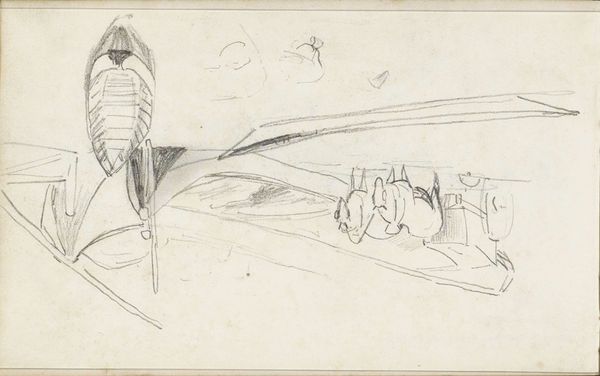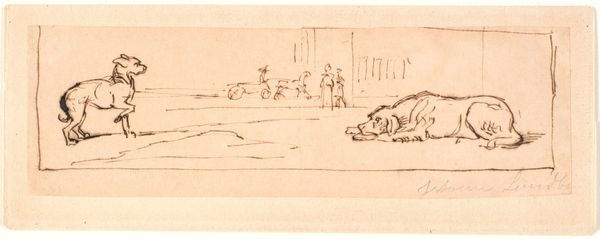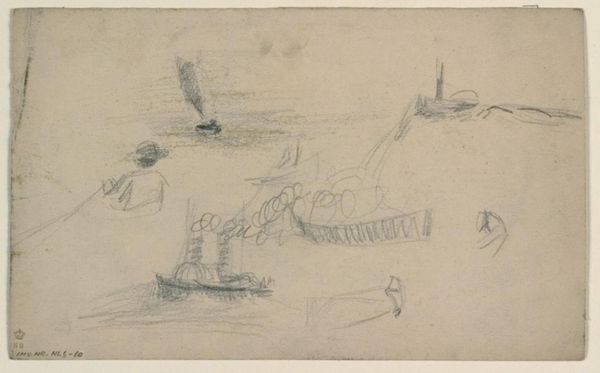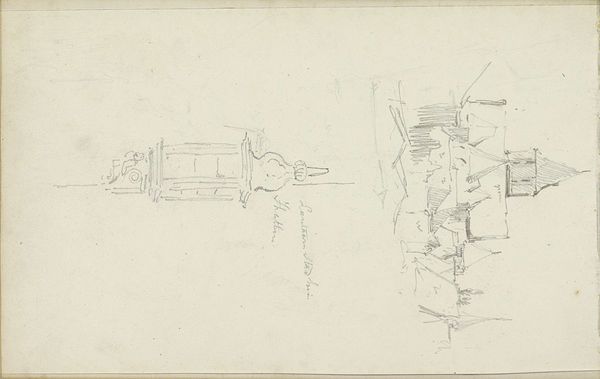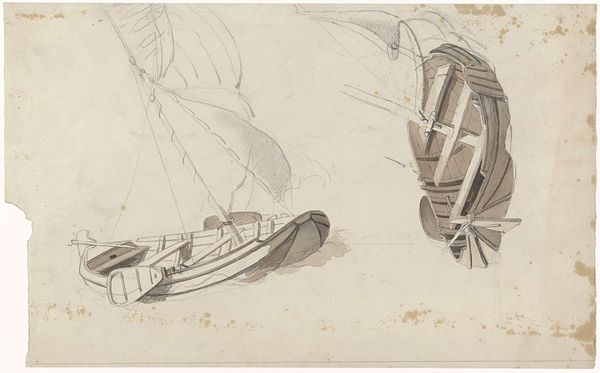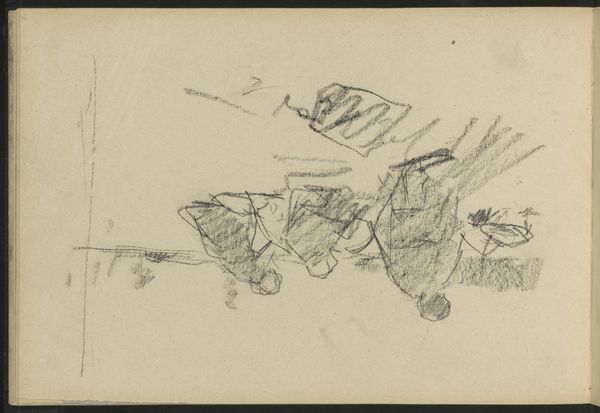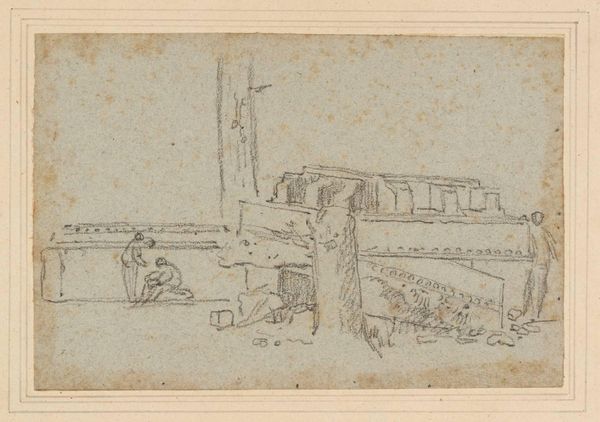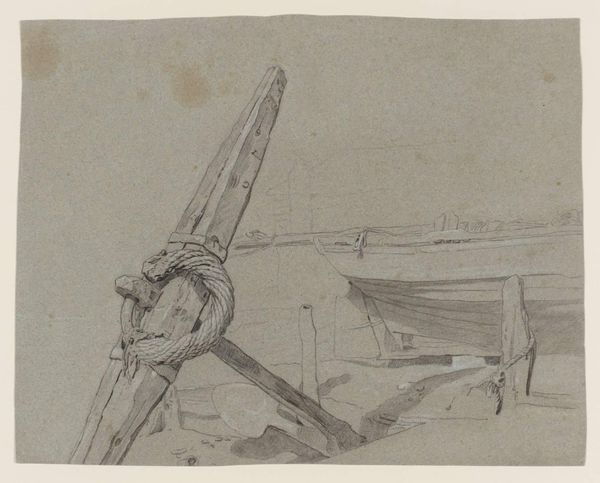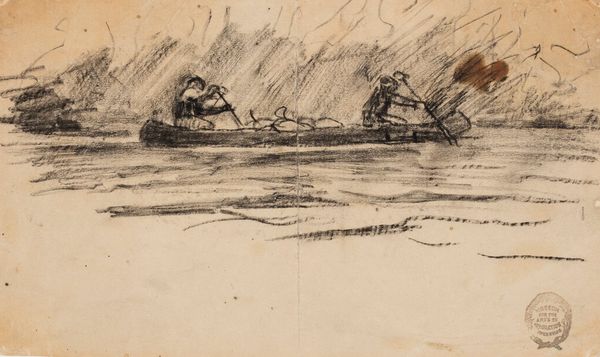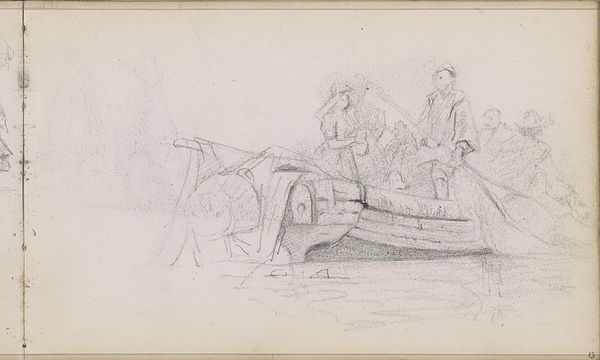
drawing, ink, pen
#
drawing
#
comic strip sketch
#
quirky sketch
#
dutch-golden-age
#
landscape
#
figuration
#
personal sketchbook
#
ink
#
idea generation sketch
#
sketchwork
#
ink drawing experimentation
#
pen-ink sketch
#
line
#
sketchbook drawing
#
pen
#
genre-painting
#
storyboard and sketchbook work
#
sketchbook art
#
realism
Dimensions: height 130 mm, width 180 mm
Copyright: Rijks Museum: Open Domain
Curator: Before us, we have "Mannen duwen en kar beladen met vaten," or "Men pushing a cart loaded with barrels," a pen and ink drawing attributed to Moses ter Borch, dating from around 1656 or 1657. It's currently held here at the Rijksmuseum. What’s your immediate impression of this work? Editor: Visually, I find it fascinating. It's all lines, energy, and this precarious balance of forms. The wheel feels especially weighty and present in the composition. There is something about the repetition of the cylindrical shapes that generates movement, it almost feels like a mechanical drawing. Curator: Indeed. It gives us a snapshot into Dutch Golden Age labor, where the working class pushes onwards amid what was an expansive period of trade and development. Ter Borch's social commentary shines through when understanding the realities of that era for many ordinary people and class disparities. The tilted angle accentuates that struggle; notice how the men must bend and exert themselves to keep it moving. Editor: I can see the figures contributing to the overall movement but find the lack of depth quite intriguing, even disorienting. Ter Borch does this deliberately; the flatness forces us to engage with the lines themselves as the primary conveyors of form. It has a certain graphic sensibility, which is further emphasized by the white background, causing the linear representation of men and materials to jump out, giving the work clarity. Curator: But what does this emphasis of clarity obscure, though? The absence of distinct facial features, for example, reduces these laborers to a homogenous mass, effectively silencing their individual stories in support of economic activity. The sketch also presents an interesting opportunity to question what stories the dominant class of the period might be motivated to erase about working conditions. It pushes you to really imagine the realities that this drawing attempts to point to through the simple depiction of figures and shapes. Editor: Interesting. I had not quite thought about it that way, but it provides such rich information now. Though the individual experiences may remain obscure to viewers, as you mentioned, it does hint at these stories beyond form and aesthetic appreciation, to become something larger through our present dialogue. Curator: Absolutely. It underscores how even the simplest sketch can act as a bridge between past and present, sparking important conversations around labor, identity, and social power dynamics.
Comments
No comments
Be the first to comment and join the conversation on the ultimate creative platform.
